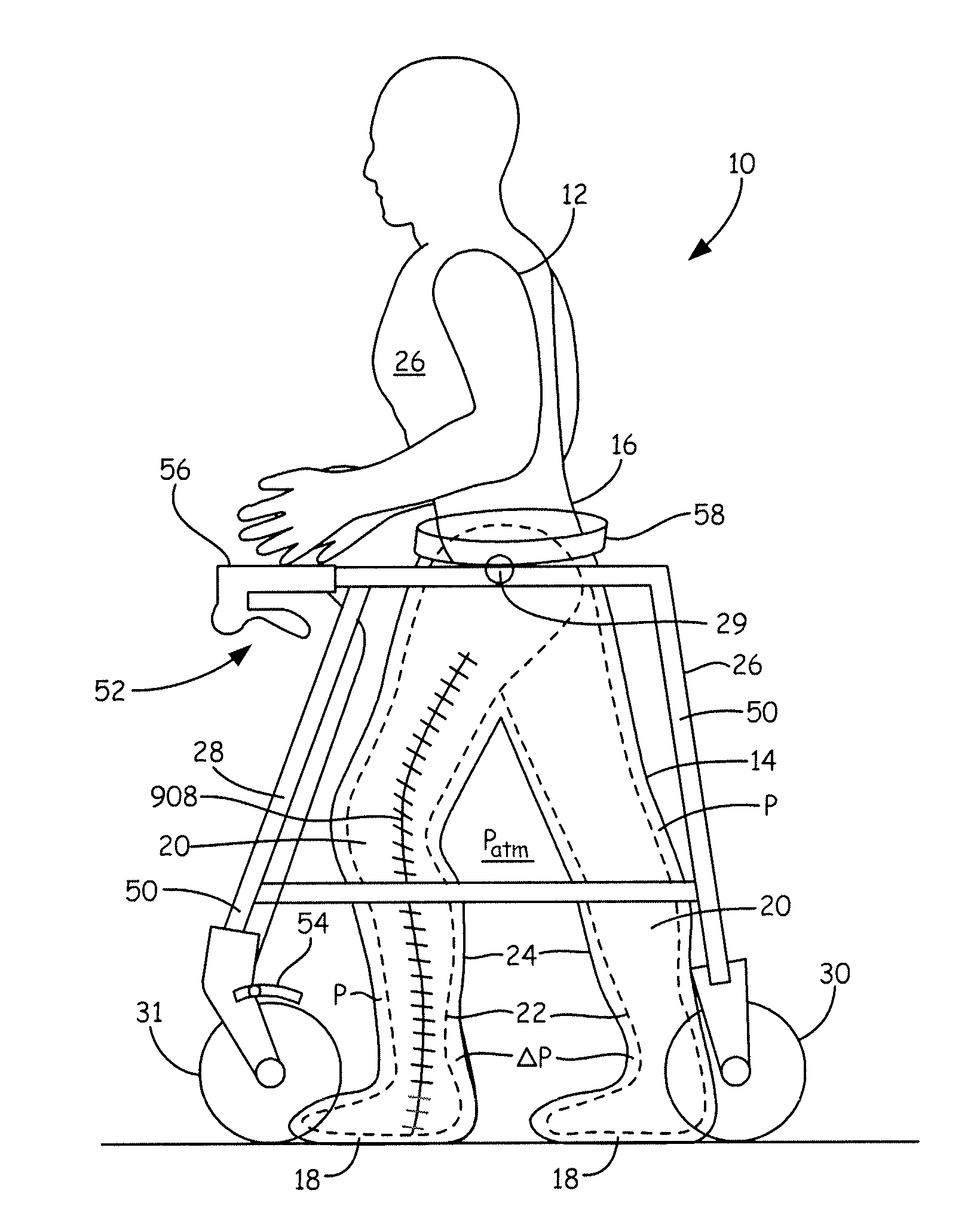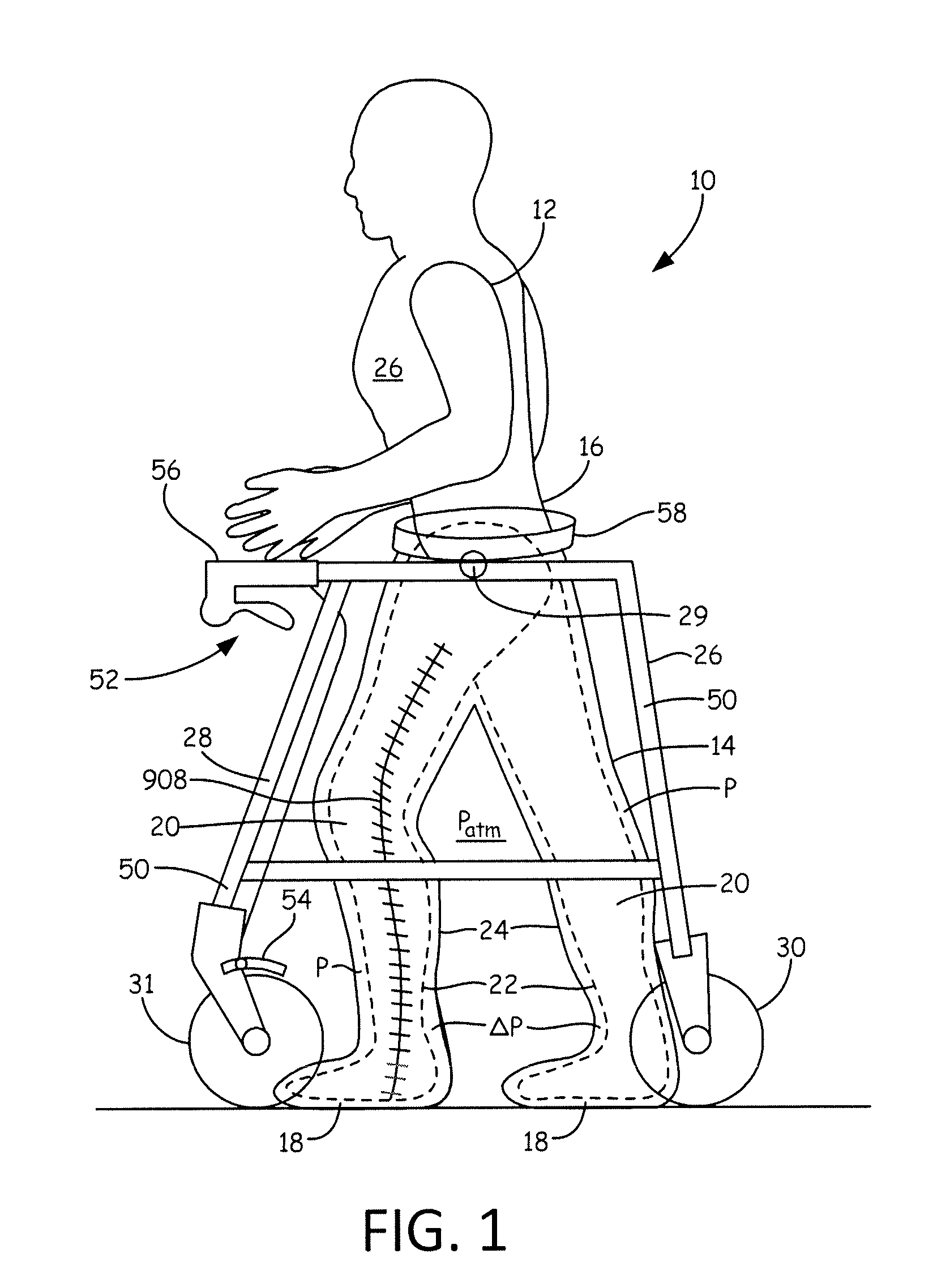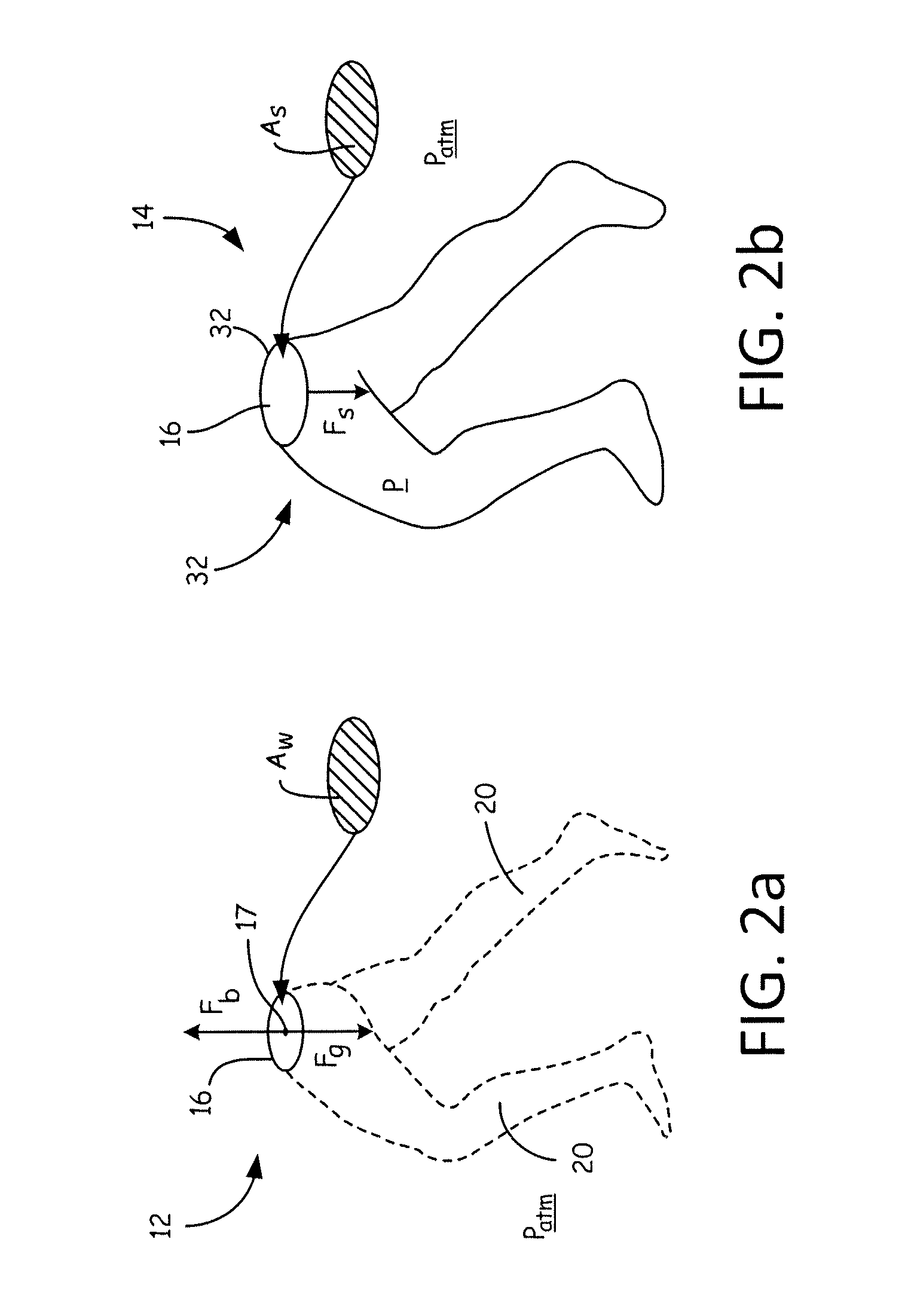Over time, body bones or joints can become damaged.
Such damage may result from the aging process, manifested by
arthritis,
osteoporosis, and slips and falls.
But injuries are also caused by sports activities.
Moreover, strokes and other neurological disorders frequently cause gait and
imbalance problems too.
Such persons often lack the strength and balance to rise from a sitting to a standing position.
These can be cumbersome and expensive systems that do not necessarily reduce the stress on the body caused by gravity, and are difficult to manipulate during
physical therapy or gait therapy sessions.
However, these types of systems are not portable, since the person is confined to the
pool or water tank.
Moreover, the resistance created by the water may interfere with physical therapy or gait therapy exercises.
But the straps and attachment devices create localized pressure points and stresses on the body, and
restrict the
range of motion of the body and its limbs.
Such a mechanical weight off-loading
system may also lack portability.
Again, such harness systems connected to stationary devices can interfere with physical therapy or gait therapy exercises.
However, this Whalen
system requires a large, immobile pressure chamber containing a
treadmill.
Such a system is expensive and requires cumbersome entry and exit by the person, which will not accommodate physical therapy or gait therapy.
The system does not allow the therapist to access and manipulate the legs of the patient to provide this gait therapy.
However, physically impaired people often lack the upper body strength or balance in order to raise themselves from a sitting to a standing position without assistance.
Also providing personnel for assistance entails additional costs for
rehabilitation institutions or in providing home care.
But, the front frame of the walker and mechanisms on the front block the patient's legs from fully extending while walking and prevent the therapist from accessing the legs from the front of the device during a physical therapy or gait therapy session.
Moreover, the air cylinder lift mechanisms and other components mounted on the sides of the device prevent access by the therapist to the patient's legs.
Furthermore, the width of the device is not adjustable to fit a range of patient widths and heights that would be encountered in a physical therapy setting.
Additionally, the device requires use of a
compressed air cylinder for power, which is inconvenient to a user due to the weight, cost and impracticality of having to transport and refill
compressed air tanks.
However, these linkages are incorporated onto the sides of the device, which restricts access by the therapist to the patient's legs to work with them during gait therapy sessions.
Moreover, a system with the electric motors and linkages will not be responsive enough to provide lift to support the patient's weight during over a two-second sit-to-stand lifting motion unless the motors are extremely large and powerful.
This would result in a very heavy and bulky system, requiring large motors and heavy batteries.
Nor does the front of device provide necessary clearance for the patient's legs to fully extend for longer strides.
The device is also not adjustable to fit the range of patients typically encountered in a physical therapy setting.
But patients who cannot stand without assistance will find it difficult, if not impossible, to first stand up to compress these springs.
Furthermore, these gas springs mounted to the sides of the walker block access to the legs of the patient from the sides.
The U-shaped base is very long and wide in comparison with other assistive devices like a walker, thereby making it very hard to navigate and maneuver the device in therapy settings.
But these devices tend to be large, bulky, and cumbersome without maneuverability.
However, many physical therapy patients lack this necessary upper body strength.
Furthermore, the harness attached to the upper
torso of the patient restricts the
natural position of the body during running and walking to a forward leaning position, and during the sit-to-stand motion.
Because harness systems pull the upper body directly upwards from the chest, they can provide too much stability for
balance training.
Another issue with the harness-based
body weight support is that the harness supporting the subject decreases the need for natural associated postural adjustments (“APAs”) that are required for independent gait.
When supported by a harness during training, any mediolateral movement is restricted by a medially-directed reaction force component that will help stabilize the body in the frontal plane, and decrease or even eliminate the need for APAs, thereby making gait and
balance training less effective.
Moreover, the straps and attachment devices create localized pressure points and stresses on the body, and
restrict the
range of motion of the body and its limbs.
In particular the straps around the thighs and
groin interfere with the back and forth rotation of the legs.
U.S. Pat. No. 3,589,366 issued to
Feather teaches exercise pants from which air is evacuated, so that the pants cling to the body of an exerciser to cause sweating, thereby leading to
weight loss.
As a result, the
pilot can lose situational awareness and spatial orientation.
But, such pressurized body suits have not previously been used to rehabilitate skeletal joint injuries.
Moreover, they have typically been used only in stationary situations like a sitting
pilot due to the problem of air pressure forcing the body suit off the lower
torso.
 Login to View More
Login to View More  Login to View More
Login to View More 


